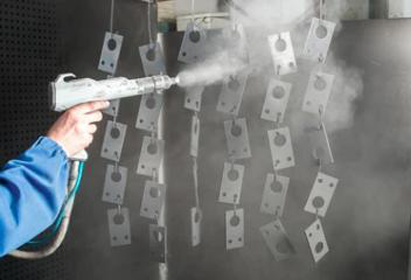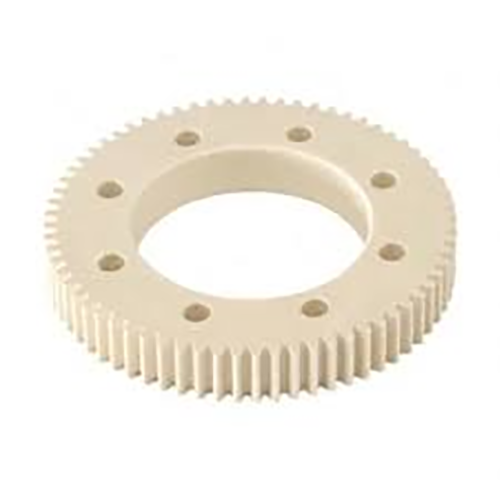
Producing the required exterior polish for a processed workpiece proves indispensable.
- Design documents set out definitive finishing requirements for parts
- Designers use Ra (mean deviation) as a numerical indicator of surface roughness
- Appreciating callout details is key to ensuring product functionality
- Designated finish alters fluid film formation, friction levels, and durability outcomes
- Accurate interpretation of callouts is required to realize the targeted surface
CNC Machining: A Definition of Precision

Numerical control machining stands as an advanced production approach with programmed toolpaths the apparatus generates complex components precisely.
- The technology facilitates production of complex parts across many materials
- CNC’s flexible capabilities match requirements of aerospace and automotive fields
- CNC machining delivers exceptional repeatability ensuring identical parts across production runs
Across development to broad production CNC machining contributes fundamentally to manufacturing innovation
CNC Spec Interpretation
Reading machine specs may appear overwhelming initially
That said, foundational understanding plus a method lets you confront technical details
Launch by determining central specs: spindle rpm, feed velocity, accuracy, envelope, controller
Every spec plays a role in determining machine performance.
Example: increased spindle revolutions aid soft materials; accelerated feed raises production.
Comprehending those interactions assists in picking the proper CNC for tasks
Take time to inspect maker literature meticulously.
Producer documentation frequently delivers important notes and clarifies terminology
What is a CNC Machine? A Comprehensive Guide
Numerical-controlled machines are computer-guided systems for accurate automated manufacturing across substrates They accept digital G-code to steer tools and control machining actions.
- Common CNC classes include milling machines, turning lathes, routing systems, plasma cutters
- Production processes accommodate metal alloys, plastics, woods, and composite materials
- Likewise CNC solutions enable fast prototyping and small-lot production for enterprises and research labs
Overview of CNC Machine Fundamentals
These tools showcase a blend of mechanical exactness and intelligent software command Versatile machinery employs programmed code to autonomously produce simple parts and complex assemblies Essential concept transposes digital designs into manufactured reality.
- CNC fabrication
- CAD-to-CAM integration
It follows systematic positional moves controlled by code Technicians are essential for choosing cutting settings, supervising processes, and validating final quality.
Why Surface Finish Matters in CNC Machining
Meeting set surface quality in CNC work is significant It strongly influences part functionality and visual appeal Workpiece material, tool settings, and secondary finishing processes determine texture.
Refined surfaces boost longevity; rough surfaces can diminish functional performance CNC systems provide diverse tooling and strategies to reach required finishes.
- For example using different cutting tool geometries |tool materials|cutting speeds to achieve a desired surface finish
- Furthermore secondary operations such as polishing, grinding, or sanding enhance finish
Understanding the relationship between machining parameters and surface finish is essential for achieving optimal results in CNC machining operations.
CNC Fundamentals: Operations and Uses
Programmed machining provides accurate part shaping across multiple material types They process digital commands to produce elaborate components repeatedly Comprehending toolpaths, G-code, and tooling strategies supports effective machining
Sectors served include aerospace, automotive, manufacturing, medical, and electronics fields From intricate propeller parts to exacting mold inserts, CNC produces accurate geometries
Surface Finish Callouts for CNC Machined Parts
Appropriate surface specification is essential during CNC part production It secures that the final item meets both functionality and looks Designers typically indicate finish using the Ra (roughness average) metric Reported in µm or inches, the metric indicates average irregularity magnitude.
Account for desired texture and the component’s purpose when selecting finish

Generally fine finishes benefit components requiring precision alignment and tolerance
Rugged finishes sometimes serve parts that need enhanced traction or grip
Use explicit finish instructions on design documents to convey the surface requirement Provide the roughness average and detail supplemental processes or treatments needed.
Remember that effective surface finish callouts are key to achieving a successful manufacturing outcome
Classification of CNC Machines and Uses
CNC manufacturing hosts an extensive set of machines for assorted machining tasks They adopt CAD-to-CAM pipelines to steer cutting tools for precise part manufacture.
- Milling centers craft intricate contours cavities and surfaces by subtractive cutting
- Routers carve wood composite and plastics into detailed shapes and profiles
- Waterjet cutters use high-pressure abrasive streams to cut diverse materials without thermal effects
Choosing the right CNC depends on production goals material type and required accuracy Unique machine capabilities support varied industry needs such as automotive, aerospace, and medical.
Reaching Optimal Surface Quality Using CNC
Creating superior finishes is essential and CNC control systems help produce them Through tailored feed rates spindle selection and tool design engineers control surface formation and limit imperfections Furthermore the utilization of high-quality tooling materials and proper lubrication techniques contributes to a smoother finish Well-chosen cutting tactics plus careful setup empower manufacture of parts with exceptional surfaces.
CNC Programming to Achieve Surface Quality
Skillful CNC programming directly impacts the final surface quality Feed, spindle settings, and cutter design are major drivers of the final surface condition Attentive parameter configuration alongside good coolant practice leads to superior surfaces.
- Moreover scheduled tool maintenance and inspection preserve surface performance Besides that systematic what is acnc machines tool upkeep and monitoring ensure sustained surface quality Additionally routine tool checks and upkeep maintain consistent finish quality
- To perfect surface results factor in material, roughness, and intended application
- Simulated machining supports parameter refinement to mitigate surface issues
- Additionally routine tool checks and upkeep maintain consistent finish quality
